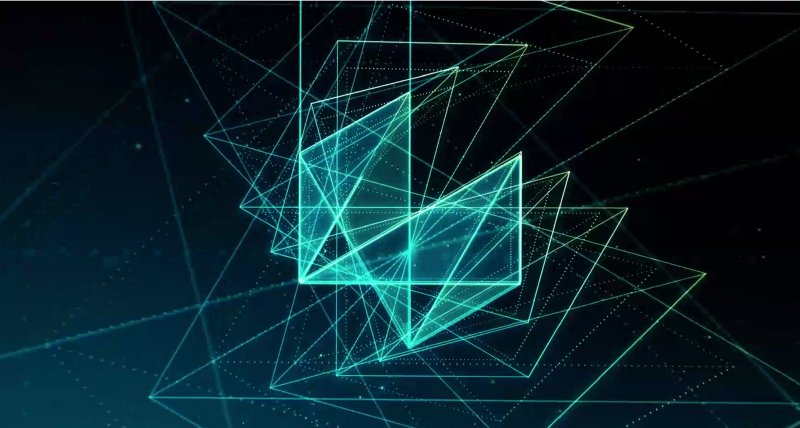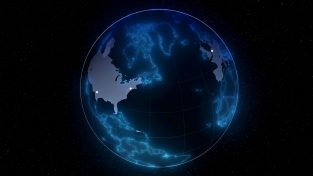In this interview, we will talk with Hexagon Geospatial Product Line Directors for the Producer Suite to hear about the latest innovations from ERDAS IMAGINE, ImageStation and GeoMedia.
BK: Welcome to HxGN Radio. My name is Brian. And today we are talking about new features in the Producer Suite, with the release of Power Portfolio 2019, set to debut in October of 2019. I’m joined by Brad Skelton, product line director for ERDAS IMAGINE, and Vince Smith, product line director for ImageStation and GeoMedia. Brad and Vince, thanks for joining us today.
BS: Thank you.
VS: Great to be here.
BK: Appreciate it. Brad, let’s start with you. I’ve got a question for you here on the Producer Suite. Why don’t you give us a high-level overview of that, and just give us some details about it, too.
BS: Okay. Well, let me talk a little bit about what it is. The Producer Suite consists of three products, really: ERDAS IMAGINE, GeoMedia, and ImageStation. And these are products that have been around for a while. They serve the remote sensing market, the GIS market, and the photogrammetry market. We have probably combined about 100,000 licenses of these products out in the world. One of the things we do is focus on keeping them up to date, keeping them relevant, keeping them useful for our very large user base.
This time around, we focused on really three main areas. One of them is performance. We worked on making the products use 64-bit capabilities of the machines. They can perform better when they do that. We’ve also focused on spatial modeling. So spatial modeling is a system in which you can do graphical programming, graphical creation of new algorithms and capabilities. And in this spatial modeling environment, we’re combining the GIS capabilities, the remote sensing capabilities, and the photogrammetry capabilities. And each version, each iteration, we add more and more in there from the three different disciplines. So, you’ll see this time we’ve done that. We’ve continued adding more and more to our spatial-modeling environment.
Then there’s just general product improvements. Like I said, we’ve got 100,000 users. You want to keep them happy. One of the things we do is we look at our ideation board, and we pick the top five asked-for features or improvements, and we make sure we add those into the product each time. That’s really the high-level summary of what we’ve been doing this year.
BK: Okay, excellent. And Brad, why don’t you also tell us a little bit about how the enhanced solution helps to enhance the power of machine learning and tackle big data challenges through GPU acceleration.
BS: One of the things that people do with the remote sensing with IMAGINE is feature extraction from imagery. If I want to say, “What kind of field is out there,” or “Are there airplanes here,” or “Where are the buildings?” And this is what people have always done with remote sensing, but there’s more imagery now, there’s fewer people to get it done with, and so we had been pulling in machine learning and deep learning technologies to help with this process. We began with the last version, but in this version, we’ve just continued to add new capabilities.
We now have object detection capabilities built on deep learning in the software, and we’ve also pulled in GPU support for deep learning in this version. We’ve seen things like performance improvements from what used to take four hours initially on just the CPU for this object detection now takes about four minutes based on your GPU. Prices may vary, but it depends upon the size of [unclear 03:23]. But it’s a big improvement.
BK: Yeah, that is. Absolutely. Well, Brad, what else is going to be new with ERDAS IMAGINE and IMAGINE Photogrammetry?
BS: Well, once again, we’ve invested a lot of time in point cloud technology. Point clouds are very prevalent now in the industry. People use a lot of the LiDAR sensors and a lot of automated technologies to extract point clouds. There’s a lot of information in them. This time around, we’ve added a number of new capabilities in Spatial Modeler, once again, to support point clouds. One of them is ground classification, so I can identify which points are on the ground — lets me eliminate the rest. Given that, I can identify which of those points that are leftover are buildings. Given those building points, we can extract footprints for those. That’s one of the areas we’ve worked on. We also worked on new sensor support. Remote sensing is driven by the data. The data comes from vendors, and there are new vendors every year, new sensors every year, and so we keep up with that. For example, we’ve added FormoSat, TripleSat support with the sensors, and that’s just one of the things we do with every version.
BK: Right. Well, Vince, what’s going to be new with ImageStation and GeoMedia?
VS: Well, let’s start with ImageStation. It’s our photogrammetry production product set. With the next release, we’ve added a capability to manually collect in stereo graded elevation data. Sounds a little old school, and maybe it is, but people still like to do that type of thing. But I think we’ve made the workflow for collecting that data really efficient, and then that data, in turn, can be turned into surfaces. And then we’ve added the capability to assign elevation data from the surfaces to 2D vector data. So that’s one thing we’ve done there.
The second nice capability we’ve added is a support for ECW. With our orthophoto production, we now read and write ECW data. And the performance there is really, really good, so we’re really pleased with what we’ve done there. In terms of hardware support, we’ve added support now for two new mice. One is the Stealth 3D Mouse, and the other is the Softmouse 3D. So, that’s just a few things in ImageStation.
Over on GeoMedia, a couple of important areas to talk about there. One, just in terms of sharing data and accessing data from other third-party products. We get a lot of people asking for QGIS. We’ve actually eliminated our capability to have a companion GDO field. And we’ve done a better job of matching the geometry types that we read and write. Now people can read and write and share data inside their enterprise a lot easier than they ever have before.
The other is in the area of spatial modeling. We’ve developed most of our spatial operators for our core capabilities, with the previous release. With this release, we’ve got four new grid analytic operators, and those are all geared toward hydrographic processing, in particular drainage basin calculations.
BK: Excellent. So how do the new enhancements of photogrammetry accelerate the production and enhance the quality of products derived from satellite, aerial, UAV data, Vince?
VS: In terms of accelerating production, two things for orthophoto production that we’ve done. One is, in regard to satellite projects, we have automated type point matching, so that speeds up the stereo process, makes things a little bit faster in that regard. And then, simply just moving processing from 32-bit to 64-bit, just to be able to handle larger amounts of data. So that’s the two things we’ve done probably for accelerating those types of workflows.
The second is, well, in terms of quality, we’ve been able to update our DTM format, our terrainmodeling format. We’ve added a capability to store the reliability factor of the points coming out of our automated elevations product. And that allows our users to visualize in a thematic sense, or a color coded sense, the quality of the data coming out of that product.
BK: All right, well, sounds wonderful. Anything else you’d like to add, Brad?
BS: Let’s see. On the IMAGINE side, we’ve got a really nice, new image enhancement technique that lets you pull out the full detail in both shadow and highlights in an image at the same time — really good for seeing the whole picture. Something that might seem minor, we’ve added a new pyramid format. Pyramid layers help you display imagery at different resolutions. This time, we’ve made a very highly compressed pyramid format using the same ECW technology. Sounds minor, but it’s one of those things that is always a pain in somebody’s side, and then it clears it up, makes it work better, makes it take less space. We support radar data. And on the radar side, we now support three new sensors: Sentinel-1, ALOS – PALSAR, and PAZ. And also, in the radar domain, we can do road extractions with radar. So, just some of the additional new features we’ve got.
BK: All right, sounds great. Vince?
VS: Yes, a couple of things to take note of. One, in terms of GeoMedia and mobile workflows, we’ve integrated GeoMedia into the Mobile MapWorks product that allows people to extract data from their GeoMedia warehouses and put it into a GeoPackage and store it on a device, take it out to the field, then bring that data back and put it into their GeoMedia warehouse again. So that overall workflow is pretty smooth. Then, in terms of our GeoMedia 3D product, we continue to add some features there. And for the 2019 release, we’ve added a threat dome capability.
BK: All right, fantastic information. Thank you for sharing all of this. Gentlemen, thank you for being here. Appreciate your time.
BS: Thank you.
VS: Thank you.
BS: Thanks for having us.
BK: All right. For more information on today’s topic, please visit hexagongeospatial.com. And to learn more and listen to additional episodes, head over to hxgnspotlight.com, and thank you for joining us here on HxGN Radio.
















